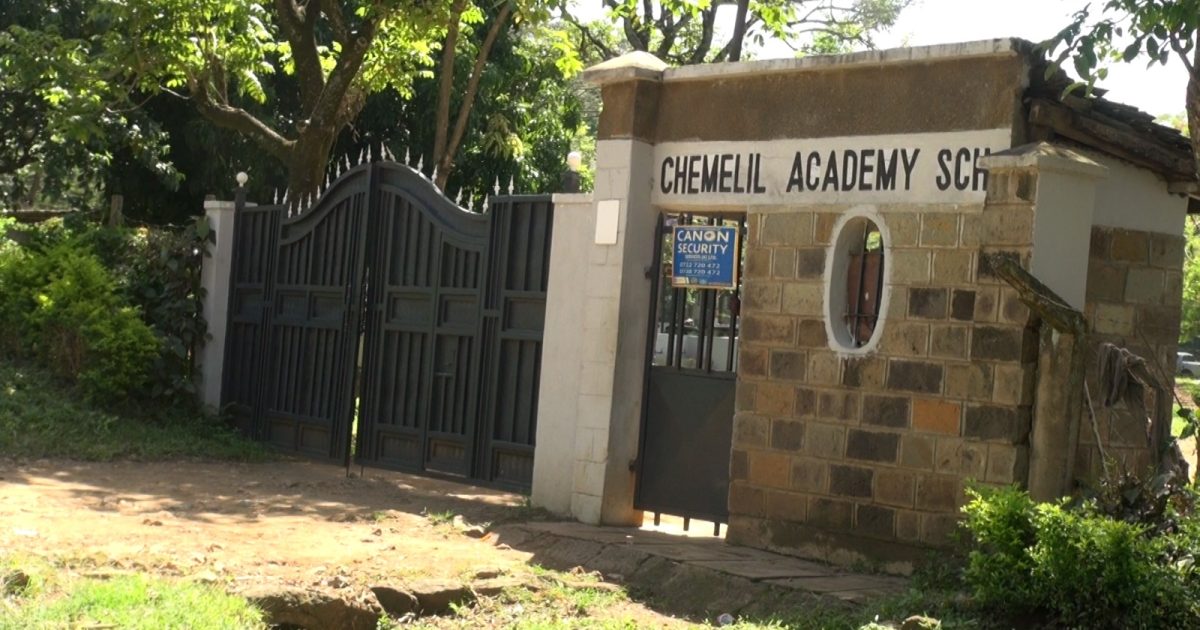By Roy Hezron
Video clips which circulated in social media showing students struggling to escape from a dormitory which was on fire in Buruburu Girls in Makadara Constituency Nairobi most recently has raised questions on critical gaps in school emergency system and whether the Ministry of Education fully implemented the recommendations of the Auditor General on safety standards in Secondary Schools.
The disturbing footage showed two students jumping from the second floor of a dormitory that was on fire raising questions on how safe were boarding schools in the country in case of a fire outbreak irrespective of its cause.

According to the Auditor General Nancy Gathungu in her Performance Audit Report on Fire Safety Performance in Secondary Schools by the Ministry of Education dated September 2020, she revealed that despite the Ministry of Education having developed measures to ensure fire safety in schools; secondary schools were not adequately prepared to handle fire incidences.
The AG noted in her report that despite most of the schools having a copy of the school’s safety standards manual, they were not familiar with what was required of them in terms of fire safety preparedness; a situation that was attributed to laxity in the implementation of the Safety Standards Manual and minimal supervision by the Ministry of Education (MoE).
The audit sought to find out whether the Ministry of Education had ensured that Secondary Schools were prepared to handle fire incidents and examined the MoE’s fire safety preparedness activities for the period 2014/2015 to 2018/2019.
The audit also assessed how the Directorate of Quality Assurance and Standards monitored the implementation of fire safety measures put in place by the Ministry.
The audit sampled 42 Secondary Schools from Five Counties of Machakos, Siaya, Uasin Gishu, Kajiado and Kiambu; as case studies based on prevalence of fire incidences between the period 2015 and 2019.
Key Findings
According to the audit findings, some schools didn’t have the right equipment and tools to handle a fire incident with physical verification of the 42 sampled schools by the audit team indicating that none of the schools had posted an evacuation map on the buildings as required.
The audit found further that 40 schools had fire extinguishers distributed in their buildings with administration blocks having the highest number of serviced fire extinguishers and classes, laboratories, dormitories and halls having the least.
It’s only Ndumberi Girls in Kiambu and Kisii School in Kisii County that had installed fire escape ladders in the dormitory while automatic fire extinguishers were only observed at Rang’ala Girls High School in Siaya County.
Shortage of Quality Assurance and Standard Officers (QASOs) at Sub-County level and inadequate resources was also a hitch in preparedness to handle fire incidences in schools.
School safety assessment which includes fire safety preparedness is supposed to be monitored by QASO’s as part of their routine advisory visits to schools.
This should be done at least once in every two years, and a follow up on implementation of their recommendations within three to six months after issuing an assessment report.
For QASOs to work efficiently during assessment process, the best practice requires the officers to be a team of at least three officers in each sub-county for them to form a panel to assess a school effectively.
According to audit findings, all the sampled counties had less than three QASO’s in all their sub-counties, a situation that forced them to collaborate with other sub-counties so as to form a team of at least three officers to enable them conduct an assessment in schools.
According to the audit findings of the sampled five counties, Kiambu County which had 12 sub-counties, 8 sub-counties only had one Sub-County QASOs (SQASOs).
One Sub-county had only two (2) SQASOs, while three (3) sub-counties had none of the SQASOs.
Uasin Gishu County which had 6 sub-counties had only four (4) sub-counties having one (1) SQASOs while one sub-county had two SQASOs with one sub-county having none of the SQASOs.
In Siaya County which had six (6) sub-counties, the auditor general found out that five (5) sub-counties had only one QASO’s, with one sub-county having two while none of the sub-county had two QASOs.
Machakos County with 9 sub-counties had 7 sub-counties having one QASO’s, one sub-county having two while one having none.
In Kajiado, three sub-counties had only one QASO’s; one sub-county had two of them while the other one sub-county had none of the QASO’s.
Apart from understaffing, the audit report reveals that the MOE had not ensured that the QASOs have adequate resources like motor vehicles to facilitate logistics for assessment of schools.
For instance, in Isinya sub-county in Kajiado County; the QASOs did not have motor vehicles to facilitate their movement and yet the sub-counties are vast with some schools in very remote areas, which hinder regular assessment of schools notably those in interior areas.
Another loophole that the AG identified was on the quality index tool which the QASOs use to carry out the assessment, which she noted that it only touches on general issues dealing with fire safety preparedness.
What Auditor-General Recommended
In ensuring that schools have adequate physical infrastructure to handle fire incidences, the AG recommended that the Ministry of Education should identify and recommend for use in schools, critical basic firefighting equipment and facilities that may be the most essential while keeping in mind the cost and efficiency constraints.
She also recommended that the Ministry should ensure that buildings that are constructed meet safety requirements, buildings already constructed are renovated or remodeled to meet safety requirements, and rationalize the status of classrooms with a view of securing opportunities for expansion in response to the increased admission.
Regarding adequate monitoring and evaluation on fire safety preparedness in schools by QASOs, the Auditor-General recommended that the Ministry of Education should rationalize deployment of QASOs at the sub-counties to ensure enough numbers to conduct timely monitoring and evaluation on fire safety preparedness in schools.
She also recommended that the Ministry should strengthen the logistical support for QASOs to make them more effective, and mainstream fire safety preparedness by incorporating it in the QASOs Quality Assessment Index tool.
It is not however clear whether the Ministry fully implemented the recommendations since September last year when the report was tabled in the national assembly.






